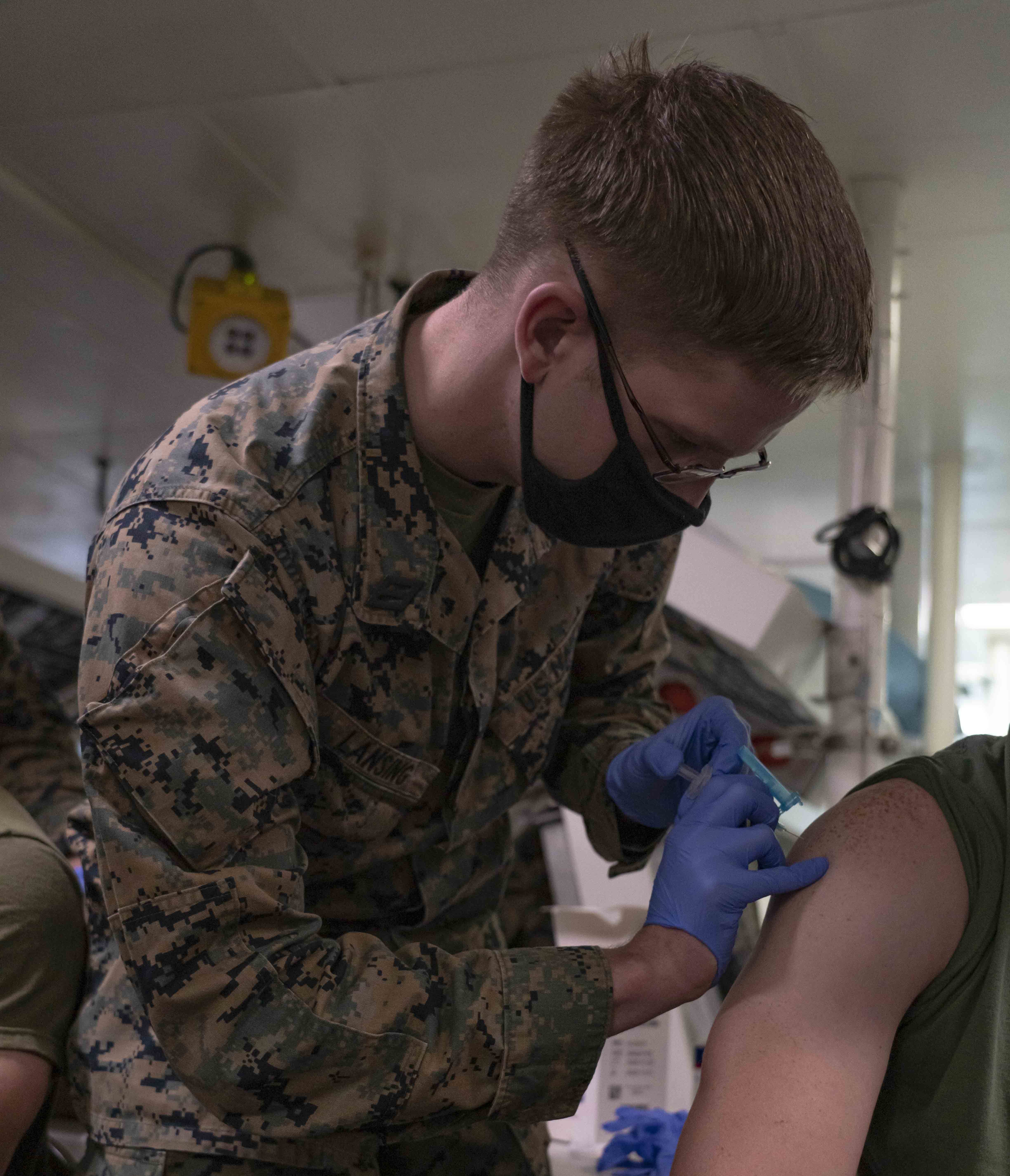
The Navy surgeon general is confident the sea services will have sufficient supplies available to meet the Pentagon’s mandatory COVID-19 vaccination and expects little resistance from sailors and Marines.
Speaking to the Defense Writers Group Thursday, Rear Adm. Bruce Gillingham said that “72 percent are fully vaccinated” in the Navy while “the Marine Corps has some work to do.” He put its fully vaccinated rate “in the high 50s.”
The exceptions to the requirement are those who are severely immunocompromised and “have a documented history of allergic reaction” to the shots, he added.
Those who refuse “will go back to counseling.” Gillingham hopes any nonjudicial or legal proceeding “will be very late in the process.”
Gillingham added that 43,000 sailors have contracted COVID-19 since the initial outbreaks last year were reported aboard carrier USS Theodore Roosevelt (CVN-71) and USS Kidd (DDG-100). He said the sea services have reported “significantly low numbers” of long-haul effects that “have military readiness implications.”
“We’re making commanders aware sailors who had COVID could have prolonged fatigue,” he said. Those cases would be “handled on a case-by-cases basis” about returning to duty or receiving a medical discharge. “There are some very challenging diagnoses in COVID.”
As for the booster shots now recommended, “we will be obviously following CDC guidelines” to “make sure people get their vaccines on time.” He added the booster shot timings could be tied to annual flu shots.
Gillingham said not only has Navy medicine learned from the COVID-19 pandemic about how it was transmitted, practices to mitigate its spread in close quarters, lab detection, treatment and the need to quickly respond to outbreaks in small teams, but that its findings have also been passed on to the larger medical community in a series of articles in the New England Journal of Medicine.
The Navy as a department learned “how to operate in that contaminated environment.”
To date, there have been no personnel reductions in Navy medicine, he said, as the services are gathering material for Congress to review before proceeding with Defense Department-wide consolidation of medical services.
He said that lessons learned from COVID-19 care are being added to the Navy’s response to the congressional request. It also will include how medicine will be conducted in the fleet, with its emphasis on the Indo-Pacific and dispersed operations. He added the need to ensure the full-range of specialties are available to sailors, Marines, their families and retirees – even in remote locations – will be in the report.
Caring for families “is an extremely high-priority for the Department of Defense.” Gillingham said, “it’s a no-fail mission.”
As for taking medical care to a more dispersed fleet and Marines in the future, Gillingham said the chief challenge “is the tyranny of geography” in the Indo-Pacific. This is very different from the ability to provide upfront surgical care in the desert well within the “golden hour” to treat the seriously injured and wounded and save their lives.
In addition to putting teams aboard ships to assist with medical care, he said the ambulance variant of the Expeditionary Fast Transport can help close that time gap. The variant would have two surgical theaters, an 18-bed intensive-care unit and carry a crew and medical staff of 100.





